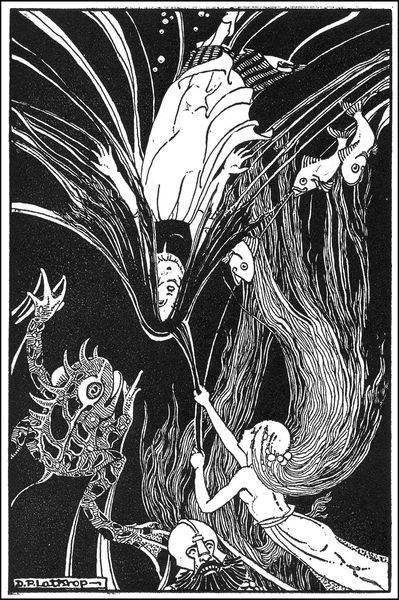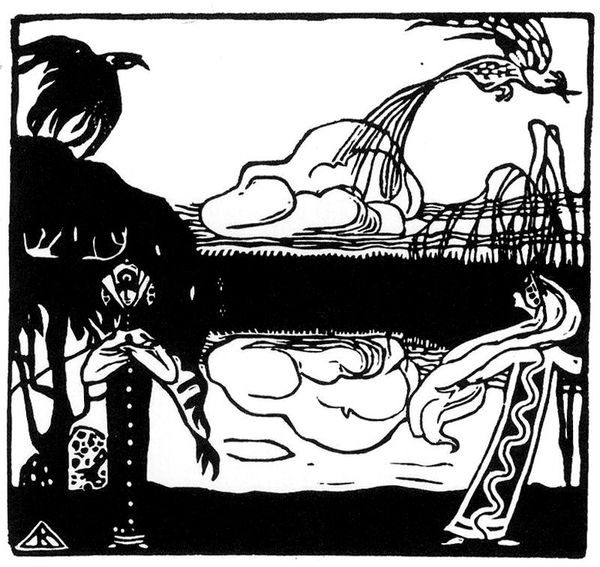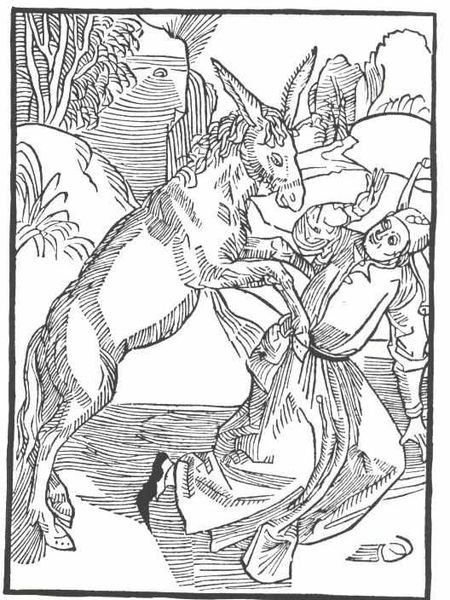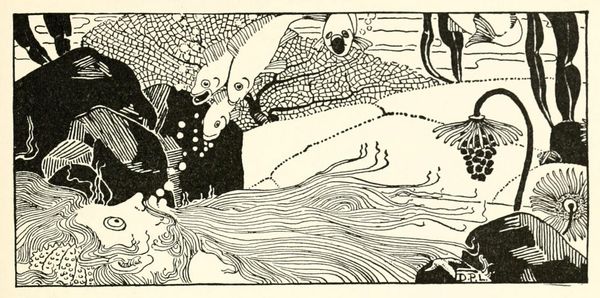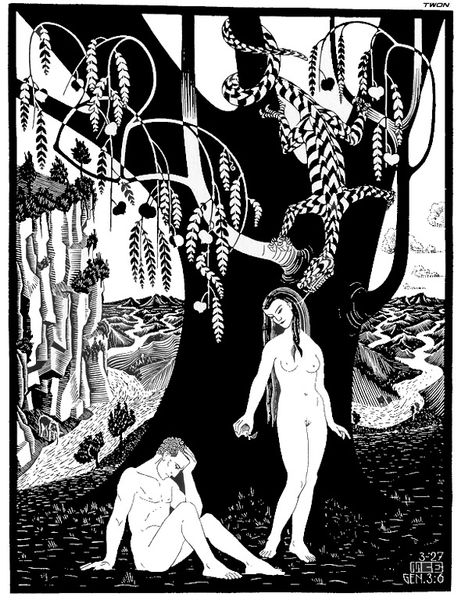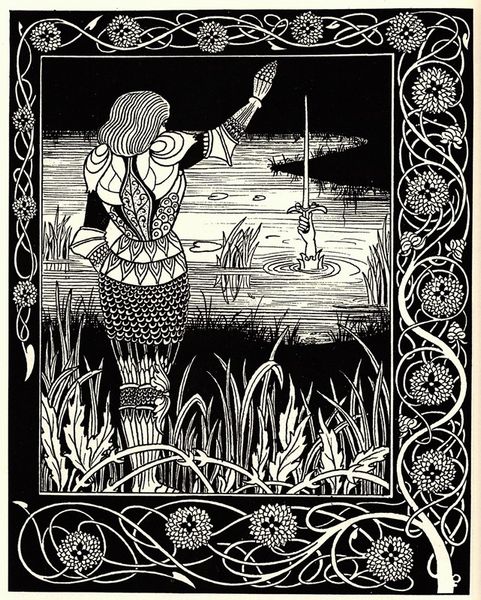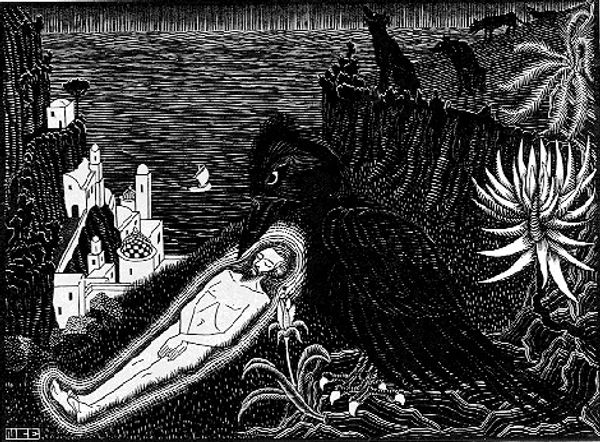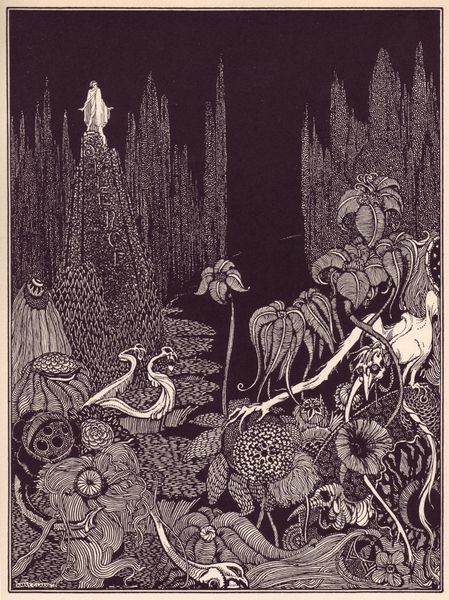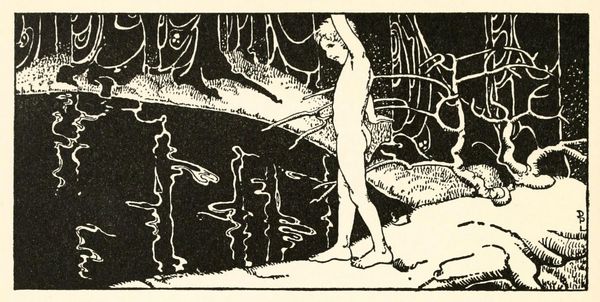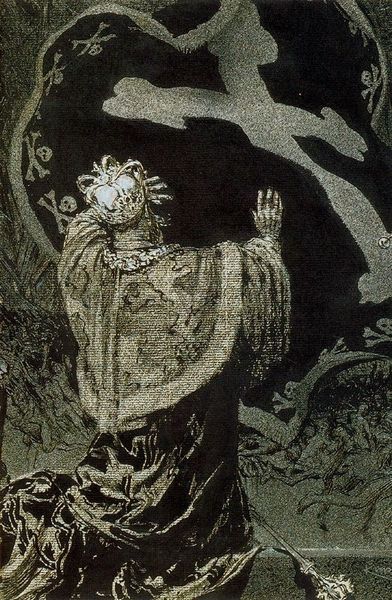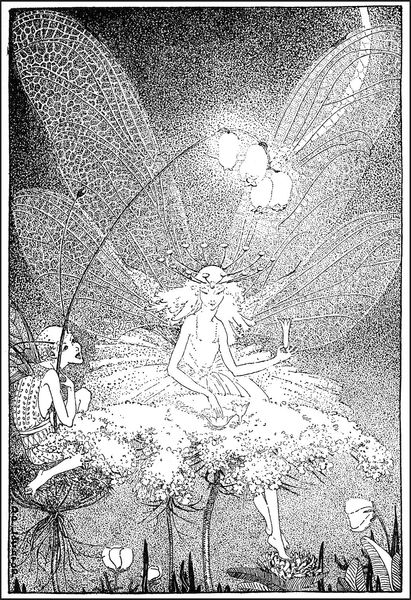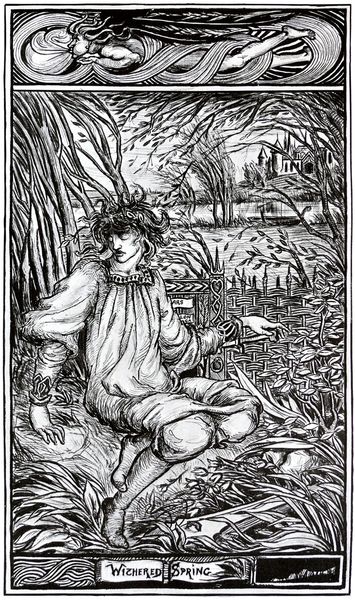
drawing, paper, ink
#
drawing
#
line-art
#
narrative-art
#
fantasy-art
#
figuration
#
paper
#
line art
#
ink line art
#
ink
Copyright: Dorothy Lathrop,Fair Use
Editor: So, this is "The Treasure of Carcassonne," a 1928 drawing by Dorothy Lathrop, rendered in ink on paper. The fantastical imagery gives it such a playful, storybook feel. I'm curious, what do you see when you look at this piece? Curator: It's fascinating how Lathrop uses this children's book illustration aesthetic to explore themes around access to wealth and power. This piece speaks volumes about the politics embedded even in what seems like harmless fantasy. Consider the creatures guarding the hoard, and the human figures adorned in jewels. Editor: What do you mean by "politics"? Curator: I mean that these aren't just aesthetic choices. Consider the time: 1928, right between the World Wars and on the cusp of the Depression. The visual emphasis on hoarded wealth—by non-human entities, no less— invites us to question who has access to resources, and what role fantastical narratives play in either challenging or legitimizing those distributions. The Carcassonne myth itself connects to concepts of unattainability and legend, doesn't it? Editor: That's a really interesting point! I never considered it that way; I was too caught up in the fantastical scene to think about that period's context. Curator: Right. Think about the audience for whom these illustrations were created, too. Wealth accumulation has deep historical and cultural roots, especially when intertwined with fantastical stories presented to the youth. What social lessons are being transmitted here, perhaps subconsciously? And who decides what's "treasure" and worth hoarding in the first place? Editor: It completely reshapes how I see this image, going beyond surface-level fantasy. The way the artwork can reflect broader societal issues, even subtly, is remarkable. Thanks for the historical insight! Curator: Precisely. Art never exists in a vacuum. Even the seemingly most innocent image can hold powerful social narratives.
Comments
No comments
Be the first to comment and join the conversation on the ultimate creative platform.
